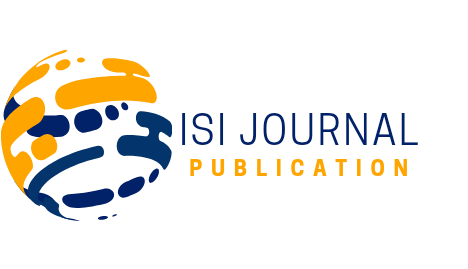How Indexing Improves the Visibility of Your Published Work
Keywords: indexing journals, Scopus indexing, increasing research visibility
In the fast-paced world of academic publishing, getting your research published is only half the battle. The real value of your work lies in how far it reaches, how often it is read, and how frequently it is cited by other scholars. In this digital age, one of the most effective ways of increasing research visibility is through journal indexing. For many researchers, especially early-career academics, the concept of indexing may sound technical or secondary. But make no mistake—publishing in indexing journals can significantly elevate your academic profile and ensure your research has a long-term impact.
So, what exactly is indexing, and why does it matter so much?
Indexing refers to the process by which academic journals are included in well-recognised bibliographic databases such as Scopus, Web of Science, PubMed, and others. These databases serve as trusted repositories of peer-reviewed literature and are widely used by universities, libraries, and researchers across the globe. When your article is published in a journal that is indexed in a respected database—especially one like Scopus indexing—your work becomes searchable, citable, and discoverable by a much broader audience.
One of the most direct benefits of being published in indexing journals is enhanced discoverability. Think of indexing databases as the Google of academic research. When scholars conduct literature reviews or search for sources to cite, they often rely on these platforms to find reliable and relevant work. If your article isn’t indexed, it may remain invisible to the very community it was intended for. But when it appears in a searchable database, it stands a far greater chance of being seen, read, and referenced. This significantly boosts your chances of gaining citations, which in turn contributes to your scholarly reputation and academic metrics.
Scopus indexing is particularly noteworthy because of its wide acceptance and rigorous selection standards. Scopus, maintained by Elsevier, is one of the largest and most trusted abstract and citation databases in the world. Journals indexed in Scopus must meet strict criteria for peer review, regularity, editorial quality, and academic contribution. As a result, publishing in a Scopus-indexed journal not only increases the exposure of your work but also serves as a mark of credibility and quality. Many academic institutions and funding bodies around the world recognize Scopus indexing as a benchmark for research excellence.
Another major advantage of indexing is its role in enhancing your academic footprint. In today’s competitive research environment, universities and research institutions often assess scholars based on quantifiable indicators such as citation count, h-index, and publication in high-impact or indexed journals. Being associated with indexed publications can therefore improve your CV, strengthen your grant applications, and support promotions or academic tenure. For PhD students or early-career researchers, publishing in indexed journals can open doors to collaborations, fellowships, and recognition within your discipline.
From a strategic standpoint, indexing journals also helps your work remain accessible over time. Articles published in non-indexed or obscure journals often get lost in the ever-growing sea of academic content. But indexed articles are archived systematically, backed by metadata, and linked to citation tools. This ensures that your work continues to surface in academic databases and search engines long after publication. In an age where digital permanence matters, indexing gives your research the shelf-life it deserves.
Beyond discoverability and academic recognition, indexing has technical and networking benefits as well. Indexed articles often come with a DOI (Digital Object Identifier) registration, which makes it easier for others to cite and link to your work. Indexing platforms also track how often your article is cited and by whom, giving you valuable insights into the impact of your research. Some databases offer author profiles that aggregate your publications, citations, and collaborations, helping you build a more cohesive academic identity.
It’s also worth noting that not all indexing platforms are equal. While there are many legitimate databases, researchers should be cautious about so-called “predatory indexes” that list journals with little to no peer review or editorial oversight. Just as reputable journals maintain high standards, so do reputable indexing platforms. Databases like Scopus indexing, Web of Science, PubMed, and DOAJ (Directory of Open Access Journals) have strict inclusion criteria, making them trusted sources for academic research. Before submitting to a journal, always verify its indexing status on the official database websites. Never rely solely on claims made on a journal’s homepage.
If you’re serious about increasing research visibility, then choosing the right journal should be a top priority. Don’t just look for fast turnaround times or low fees—look for journals that are indexed in respected databases and have a strong readership in your field. When planning your publication strategy, ask yourself: Is this journal indexed in Scopus or Web of Science? Will my target audience find this article in their usual academic search engines? Am I maximising the potential reach of my research?
Authors can also take a proactive approach after publication to amplify visibility. Share the indexed version of your article through academic social platforms like ResearchGate, Academia.edu, and LinkedIn. Update your ORCID profile and institutional repositories with the indexed citation. Encourage your colleagues and collaborators to cite your work where relevant. All of these efforts, when combined with the power of indexing, work together to maximize your research footprint.
In conclusion, publishing in indexing journals is one of the most effective strategies for ensuring your work reaches the right audience and has a lasting impact. From enhanced discoverability and citation tracking to academic recognition and professional advancement, the benefits are numerous. In particular, publishing in journals with Scopus indexing can elevate your research profile and provide the credibility needed to thrive in today’s scholarly world. If your goal is to increase research visibility, then indexing should not be an afterthought—it should be at the heart of your publication plan. Your research deserves to be seen, cited, and celebrated. Let indexing help it get there.
